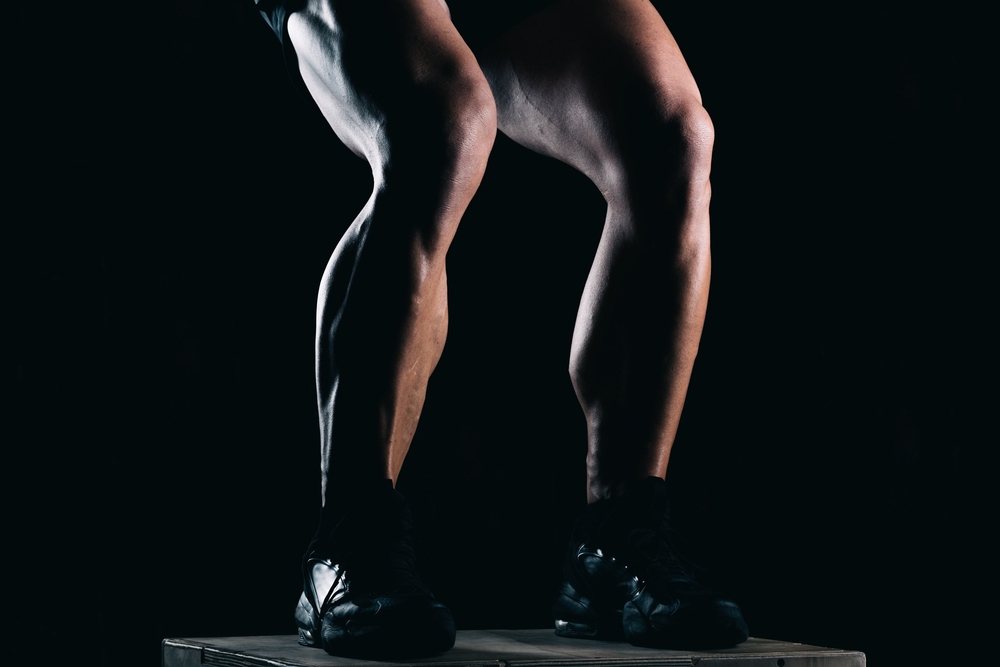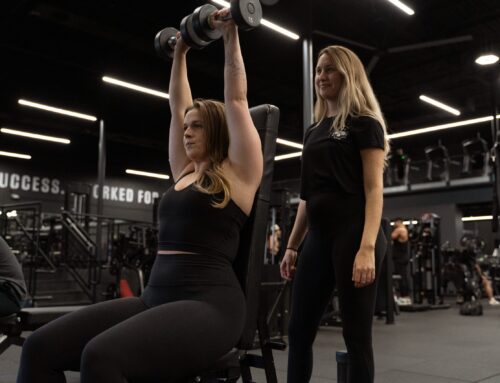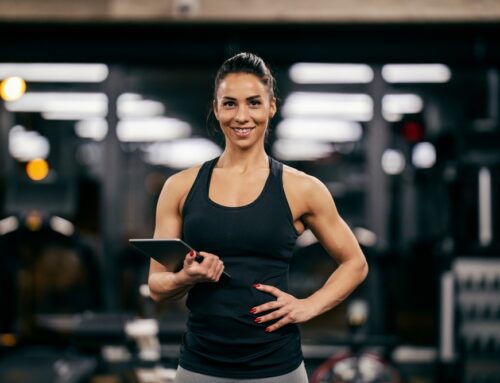Want stronger, more sculpted legs? You might be overlooking some key exercises for leg day.
Our list of leg exercises is tailored to bolster your lower body, targeting the muscles you often neglect like the gluteus medius, calves, and hamstrings. Cut through the noise of ineffective workouts with our streamlined, powerful routines that effortlessly fit into your workout regimen. These exercises not only challenge your lower body but also fill in the gaps of your current routine.
Key Takeaways
- Understanding the anatomy and functions of the major leg muscles like glutes, quadriceps, hamstrings, and calves is essential for creating effective workouts and improving lower body strength, mobility, and overall health.
- Implementing a variety of leg exercises, including squats, lunges, deadlifts, hip thrusts, and calf raises, ensures well-rounded training.
- To achieve optimal leg development and prevent injury, maintain proper form during exercises, incorporate adequate warm-up and mobility drills, and adhere to good nutrition and recovery.
Importance of Leg Day
Far from being just another checkbox on your workout list, leg training is the cornerstone of a balanced fitness routine, providing the foundation for strength, speed, and stability.
Whether you’re an athlete looking to boost your performance or simply someone who enjoys an active lifestyle, leg workouts are your secret weapon for healthy, fluid movement. So, lets give your legs the attention they deserve – your entire body will thank you for it.
Glutes
Glutes play a crucial role in your body’s alignment and strength. When you strengthen your glutes, you build a solid foundation that supports your lower back, alleviates pain, and improves your posture.
These muscles are part of your posterior chain, which includes the hamstrings and spinal erectors, essential for preventing injuries and building foundational strength for a variety of exercises. Furthermore, glutes function beyond just pushing you up the stairs; they also maintain the balance of your entire lower body.
Quadriceps
Quadriceps, the four-headed muscle group at the front of your thighs, are nothing short of spectacular when it comes to their role in your leg workouts. Each head, from the vastus lateralis on the outside to the vastus medialis on the inside, works tirelessly to extend your knee and play a significant role in your daily activities like walking, squatting, and jumping.
Hamstrings
The hamstring muscles, a trio of muscles running down the back of your thighs, are the unsung heroes that facilitate your body’s ability to stand tall and carry out explosive movements. The outer biceps femoris, the inner semitendinosus, and the semimembranosus work in harmony to support your every stride, hop, and leap.
Calves
Your calves, comprising the gastrocnemius and soleus muscles, are the pillars of your lower body. These muscles are constantly engaged, whether you’re tiptoeing to reach the top shelf or sprinting to the finish line. They play a critical role in your posture and walking form, making them essential for anyone who spends time on their feet.
Top Leg Day Exercises
As you kickstart leg day, it’s vital to equip yourself with top-tier leg exercises that engage all the major muscle groups for a holistic leg strength, and tone. Here are some exercises to consider:
- Bodyweight squats
- Bulgarian split squats
- Lunges
- Deadlifts
- Leg press
- Calf raises
Each exercise is designed to activate different muscle fibers for a well-rounded routine. Even beginners can jumpstart their leg training with simplified variations of these exercises.
Now, let’s explore the most effective lower body moves that promise to take your leg workouts to the next level!
Squats
Squats are the quintessential leg exercise, a true test of lower body strength and endurance. They come in many forms, including:
- Bodyweight squat
- Barbell back squat
- Goblet squat
- Rack squat
Each variation targets your leg muscles in a unique way while firing up the whole body.
For beginners, mastering the form with bodyweight before progressing to weights is crucial for building strength and avoiding injury. Starting from the correct position and focusing on proper form can lead to better muscle development and prevent strain on the lower back.
And remember, it’s not always about the weight on the bar. Lighter loads with proper form lead to better results than heavier weights with bad form.
How to do a Basic Squat
- Stand with your feet shoulder-width apart, toes pointing forward or slightly outwards.
- Keep your spine neutral, shoulders back, and chest up throughout the entire movement.
- Extend your arms out in front of you for balance, or place your hands on your hips.
- Hinge at the hips and bend your knees as if you’re about to sit back into a chair.
- Lower your body down, keeping the weight in your heels, until your thighs are at least parallel to the floor. Ensure your knees do not go beyond your toes.
- Keep your core tight and push through your heels to return to the starting position, fully extending your hips and knees.
Maintain proper form throughout the squat to avoid injury and maximize the effectiveness of the exercise. Remember to breathe in as you lower down and exhale as you push back up. As you become more comfortable with the movement, you can add resistance by holding dumbbells or a barbell for an added challenge.
Lunges
Lunges are a compound exercise that target the quadriceps, hamstrings, glutes, and calves, making them a versatile addition to any leg workout. They can be performed with just your body weight or with added resistance like dumbbells or a barbell to increase the challenge.
These dynamic movements not only sculpt your legs but also improve your posture and correct muscle imbalances. Some lunge variations include:
- Walking lunges
- Reverse lunges
- Forward lunges
- Side lunges
- Curtsy lunges
Try incorporating these different lunge variations into your leg workout to target different muscles and keep your routine interesting.
How to do a Basic Lunge
- Begin by standing tall with your feet together and hands on hips or at your sides for balance.
- Take a step forward with one foot, keeping your spine straight and shoulders back.
- As you step forward, lower your hips toward the floor by bending both knees. Make sure your front knee is directly above your ankle, not pushed out too far, and your back knee is hovering just above the ground.
- Keep the weight in your heels as you push back up to the starting position.
- Repeat on the other side, stepping forward with the opposite foot.
Your front foot should be flat on the ground, and your back foot should be balanced on the ball of your foot. It’s also important to engage your core throughout the movement for added stability.
Deadlifts
Deadlifts, particularly Romanian Deadlifts, are a powerhouse exercise for the posterior chain, targeting the glutes, hamstrings, and calves while also enhancing hip mobility. This classic lift is not just about hoisting weight; it’s a skillful dance of push and pull that begins with driving power from the ground and culminates in a triumphant lift that engages your entire lower body.
- Sumo Deadlift
- Romanian Deadlift
- Trap Bar Deadlift
- Stiff-Legged Deadlift
- Deficit Deadlift
- Snatch-Grip Deadlift
- Single-Leg Deadlift
By strengthening the push phase, you’re setting the stage for increased squat performance and overall leg development.
How to do a Basic Deadlift
Performing a basic deadlift is a straightforward yet powerful way to work the entire posterior chain, including your glutes, hamstrings, lower back, and core. Here’s a step-by-step guide to ensure you’re lifting safely and effectively:
- Stand with your feet hip-width apart, with the middle of your feet under the barbell.
- Bend at the hips and knees, and grasp the bar with a shoulder-width grip, hands just outside of your legs.
- Keep your back flat and your chest up, pulling your shoulders back and down away from your ears.
- Drive through your heels and push your hips forward to lift the bar, keeping it close to your body.
- As the bar passes your knees, straighten your legs and continue to lift your chest until you are standing upright with the barbell in front of your thighs.
- Pause at the top, then carefully lower the bar back to the ground by bending at the hips first, then the knees, maintaining a flat back throughout the movement.
Remember to keep the barbell close to your body during the entire lift to reduce strain on your lower back. Start with lighter weights to perfect your form before progressing to heavier loads. Always focus on form over weight to maximize gains and minimize the risk of injury.
Hip Thrusts and Glute Bridges
Hip thrusts and glute bridges are your go-to moves for targeting the glutes, contributing to a rounded shape and enhancing hip mobility crucial for lower body day-to-day functions.
When executed correctly, hip thrusts become a full-body effort that recruits multiple muscles for maximum efficiency. Start with your feet hip width apart and maintain your hip width for proper form.
- Barbell hip thrust
- Single-leg hip thrust
- Banded hip thrust
- Weighted glute bridge
- Single-leg glute bridge
- Elevated glute bridge
Glute Bridges vs. Hip Thrusts
When it comes to lower body workouts, both glute bridges and hip thrusts are popular exercises for targeting the gluteal muscles. While they may appear similar at first glance, there are distinct differences between the two that affect their difficulty level and the muscles they target.
Glute Bridge:The glute bridge is a foundational exercise that focuses on the gluteus maximus muscles. To perform a glute bridge:
- Lie on your back with knees bent and feet flat on the ground.
- Lift your hips off the floor until your body forms a straight line from shoulders to knees.
- Squeeze your glutes a the top, and then slowly lower your hips down.
This move can be done with just your body weight or with added resistance placed on your pelvis, such as a weight plate or barbell.
Hip Thrust:The hip thrust, on the other hand, is a more advanced exercise that not only targets the glutes but also engages the core and hamstrings to a greater extent. For this exercise:
- Sit on the ground with your upper back resting against a bench or stable surface.
- With knees bent and feet flat on the floor, thrust your hips upward, driving through your heels and squeezing your glutes at the top of the movement.
- Slowly lower your hips down to complete the rep. Don’t let your hips touch the ground for an added challenge.
The hip thrust allows for greater range of motion and typically involves heavier loads, which can lead to increased muscle activation and gains.
Calf Raises
Calf raises are the unsung heroes of leg day, focusing on the often-overlooked calf muscles. By focusing on a strong contraction with each raise, you’re not just working towards well-defined calves; you’re also contributing to your lower body’s overall integrity and injury prevention.
Specifically, regular calf raises can help prevent common running injuries such as Achilles tendinitis and shin splints. By strengthening the muscles and tendons around the lower leg, they can more easily absorb some of the impact while running and provide better support for the ankle joint.
Calf raise variations include:
- Standing calf raise
- Seated calf raise
- Calf raise on a leg press machine
- Single-leg calf raise
- Banded calf raise
- Calf raise with dumbbells or barbell
- Farmer’s walk on tip toes
How to do a Basic Calf Raise
Calf raises are a simple yet effective exercise designed to strengthen and sculpt the calf muscles. Here’s how you can perform a basic calf raise with proper form:
- Stand upright with your feet hip-width apart. You can do this exercise with body weight alone, holding dumbbells by your sides, or using a calf raise machine if available.
- Position the balls of your feet on an elevated surface like a step or a block, with your heels hanging off the edge, if you’re looking for a greater range of motion. This is optional but recommended for a deeper stretch.
- Keep your core engaged, your back straight, and your gaze forward.
- Slowly raise your heels as high as possible, pushing through the balls of your feet and contracting your calf muscles at the top of the movement.
- Hold the contraction briefly at the top, then slowly lower your heels back down below the level of the step or block to stretch the calf muscles.
- Repeat the movement for the desired number of reps, usually between 12-15 for a good muscle burn.
It’s important to control the movement throughout the exercise to maximize muscle engagement and avoid using momentum. For added intensity, you can perform the exercise on one leg at a time or add more weight.
Creating a Balanced Leg Workout Routine
Developing a solid leg workout is the key to making the most of your time at the gym time and seeing results. To do so, you need a well-rounded group of exercises, coupled with the right number of reps and sets for your fitness level.
So, how do you know what exercises to pick for an effective leg workout that is also enjoyable? Making sure you hit every muscle group the right amount with the right intensity? Let’s keep reading.
Exercise Selection
To select the right leg exercises for your leg day, pick a mix of compound movements that work multiple muscles at the same time. Be sure to also throw in isolation exercises that zoom in on specific areas for targeted growth. If you’re new to leg day, start with bodyweight exercises to get a feel for the movements before loading any weight—but always progress using a lighter weight than you think to avoid injury and maintain proper form.
Some of the best leg exercises include:
- Squats
- Lunges
- Deadlifts
- Leg press
- Calf raises
These exercises are a perfect foundation for more advanced variations. But you can also stick to the basics and simply increase the intensity to see amazing results.
Reps, Sets, and Frequency
Understanding reps and sets is key to a successful leg workout. Though, it does vary whether your goal is building strength, muscle definition, or endurance.
For strength, aim for lower reps with heavier weights. Start with 3-6 reps for 4-6 sets with a weight that is challenging but still allows you to maintain proper form.
If increasing muscle size and definition—also known as hypertrophy—is your goal, the sweet spot is usually mid-to-higher reps with moderate weight. Start with 8-12 reps for 3-5 sets.
For endurance, go for a higher number of reps with lighter weights. Start around 15-20 reps and aim for 2-4 sets.
And when it comes to frequency, strike the right balance between workout days and rest days so your muscles have the recovery time they need to grow stronger. For most people, training legs 1-2 times per week is the sweet spot. It allows time for good muscle recovery and growth without overtraining.
Remember, it’s important to listen to your body and adjust your reps, sets, and frequency as needed. As you progress, your body will adapt, and you’ll need to increase the weight, reps, sets, or try other leg exercises to continue challenging your muscles and making gains. Progressions and variations are also the best way to prevent hitting a plateau.
One variation you can try is working one leg at a time. This method helps you train your balance and stability in addition to your lower body muscles. It’s a win-win!
A workout log can help you track your progress and make informed adjustments to your routine. Some people prefer using an app—there are dozens to pick from—while some people prefer a paper journal. The choice is up to you!
Leg Day Tips and Common Mistakes to Avoid
Proper Form
We cannot emphasize enough how important maintaining proper form is. Good form marks the difference between making progress and facing injury.
When squatting, for instance, your lower back receives significant activation. Maintaining the correct upper body posture and keeping feet shoulder width apart is paramount for keeping yourself from injury.
Furthermore, a poor stance can lead to increased stress on your spine, which is why engaging your core and keeping your back straight is essential, especially when lifting heavy.
Warm-Up and Mobility
Never underestimate the power of a thorough warm-up and mobility session. A proper warm-up increases muscle temperature and joint mobility, potentially enhancing your performance by up to 79%.
Start with a brisk walk or jog to get the blood pumping, then move on to dynamic stretches that engage both the upper and lower body. Incorporating leg-specific movements like glute bridge abductors can keep the intensity up and ensure you’re primed for your workout.
Recovery and Nutrition
A leg workout doesn’t end when you leave the gym. You also need a solid recovery routine to support muscle growth and development. It’s crucial to give your muscles 24 to 48 hours between intense sessions involving the same muscle groups to ensure proper muscle recovery.
Plus, fueling your body with the right nutrients after a taxing workout aids in muscle repair and prepares you for your next session. After pushing your lower body muscles to their limits, aim to refuel with a combination of protein and carbohydrates.
Protein is the building block of muscle tissue, so including a source of high-quality protein like chicken, fish, tofu, or a protein shake can help repair the microtears caused by exercise.
Carbohydrates are equally important as they replenish the glycogen stores that your muscles have depleted during your workout. Good sources include whole grains, fruits, and vegetables.
Don’t forget to hydrate! Replacing fluids lost through sweat is crucial, so water should be your go-to drink post-workout. If you engaged in an especially long or intense session, consider an electrolyte drink to replenish sodium and potassium levels.
Lastly, consider the timing of your post-workout meal. Ideally, try to eat within 45 minutes to an hour after your workout, as this is when your muscles are most receptive to nutrient uptake.
Leg Day with Carbon Performance
It’s clear that leg workouts are a crucial part of any fitness routine. They’re the bedrock of functional strength, essential for everyday movements and athletic performance.
By incorporating a diverse range of exercises, you can build a lower body that’s not only strong and toned but resilient and balanced. So remember to hit every muscle group, keep your form pristine, and allow your body to recover.
Now that you’re ready to step into your next led workout with confidence, why not make it a day with Carbon Performance? With locations in the greater southeast area, you are sure to find your nearest location to meet any of your fitness goals. Contact us today to learn more about how you can become a member today!













